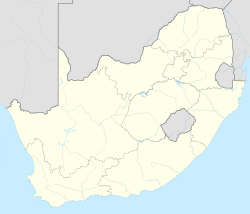Coffee Bay
|
Coffee Bay Koffiebaai |
|
|---|---|

Coffee Bay
|
|
|
|
|
| Coordinates: 31°59′10″S 29°08′50″E / 31.98611°S 29.14722°ECoordinates: 31°59′10″S 29°08′50″E / 31.98611°S 29.14722°E | |
| Country | South Africa |
| Province | Eastern Cape |
| District | O.R.Tambo |
| Municipality | King Sabata Dalindyebo |
| Established | 1874 |
| Area | |
| • Total | 0.64 km2 (0.25 sq mi) |
| Population (2011) | |
| • Total | 258 |
| • Density | 400/km2 (1,000/sq mi) |
| Racial makeup (2011) | |
| • Black African | 73.0% |
| • Coloured | 3.5% |
| • White | 20.8% |
| • Other | 2.7% |
| First languages (2011) | |
| • Xhosa | 65.5% |
| • English | 22.9% |
| • Afrikaans | 7.4% |
| • Other | 4.3% |
| PO box | 5082 |
| Area code | 047 |
Coffee Bay (Afrikaans: Koffiebaai) is a small town situated on the Wild Coast of the Eastern Cape Province of South Africa. It is located about 250 kilometres south of the city of Durban and has a population of 258 people.
The town is named after the hundreds of coffee trees which grew from beans either scattered by a shipwreck or by plunderers. A holiday resort in Tembuland is located 80km south-east of Viedgesville. It can be reached via a turn-off from the N2 highway.
The Mthatha River has its mouth near Coffee Bay.
...
Wikipedia



